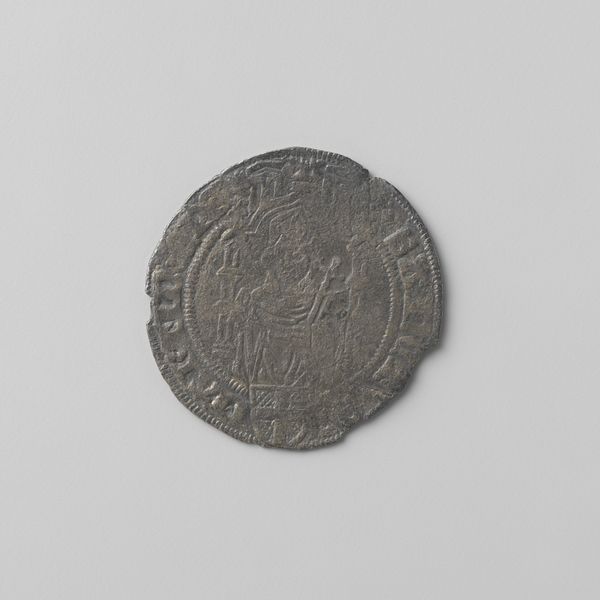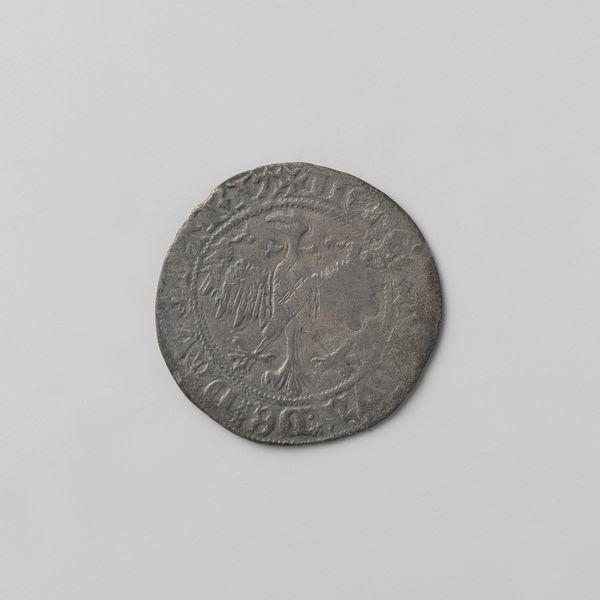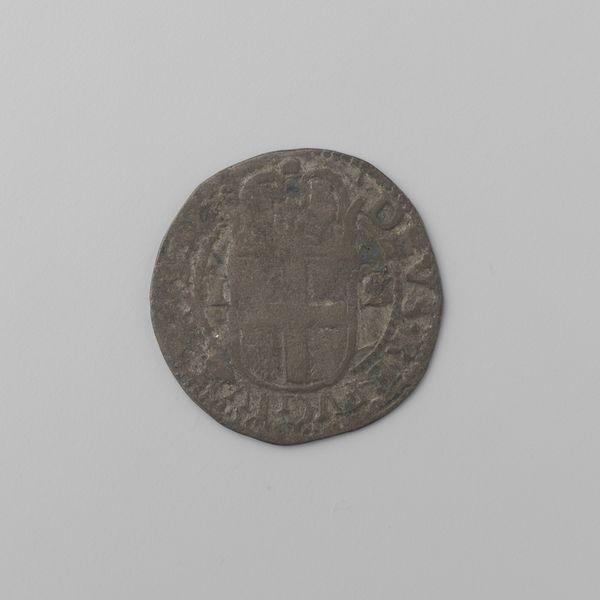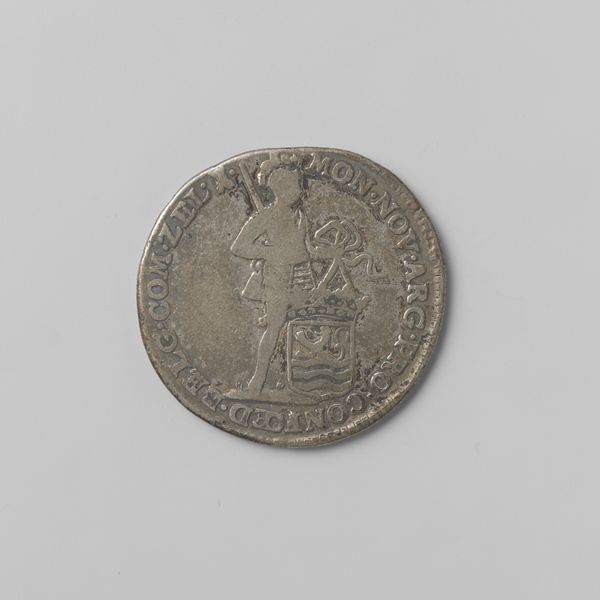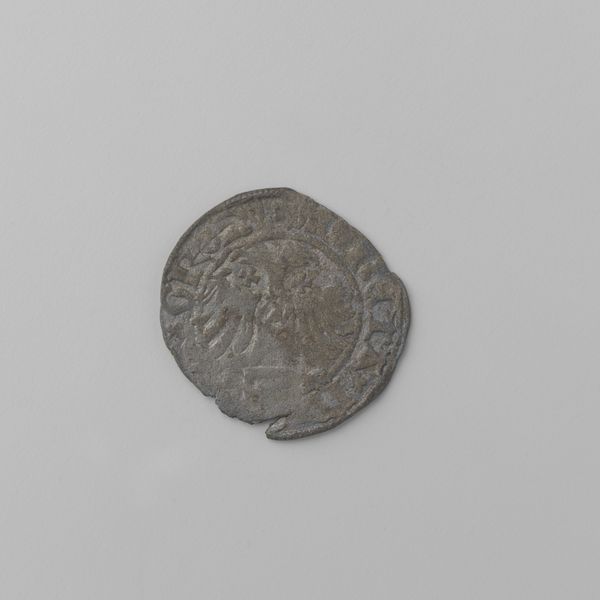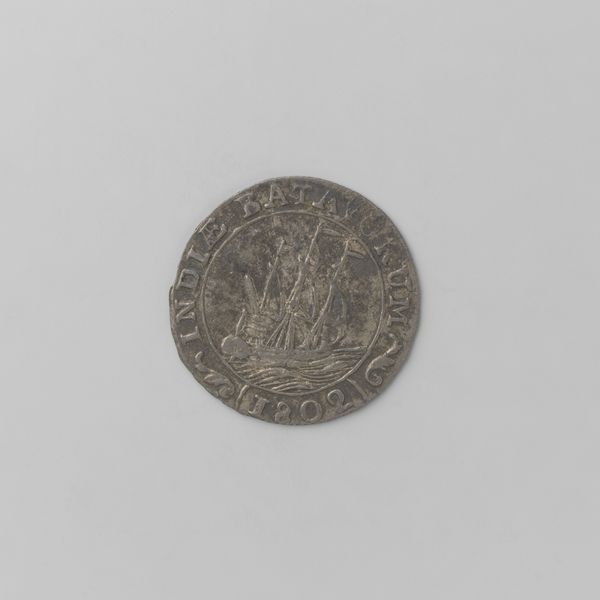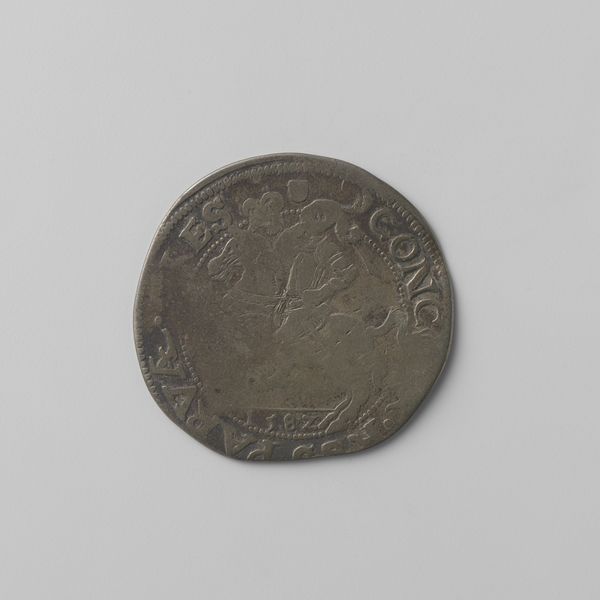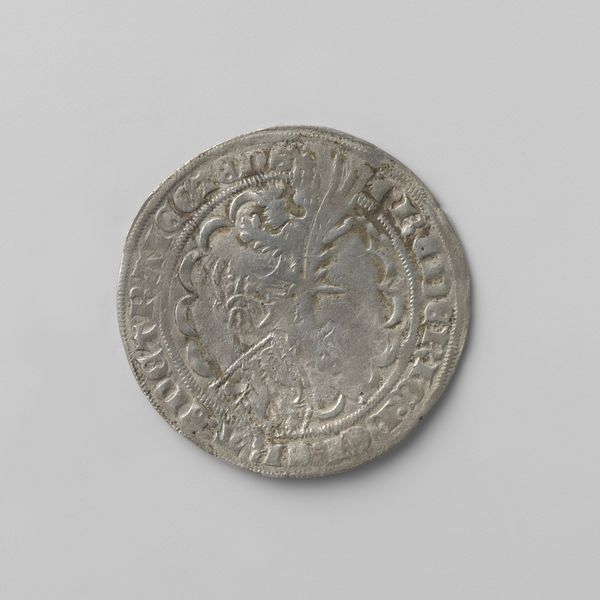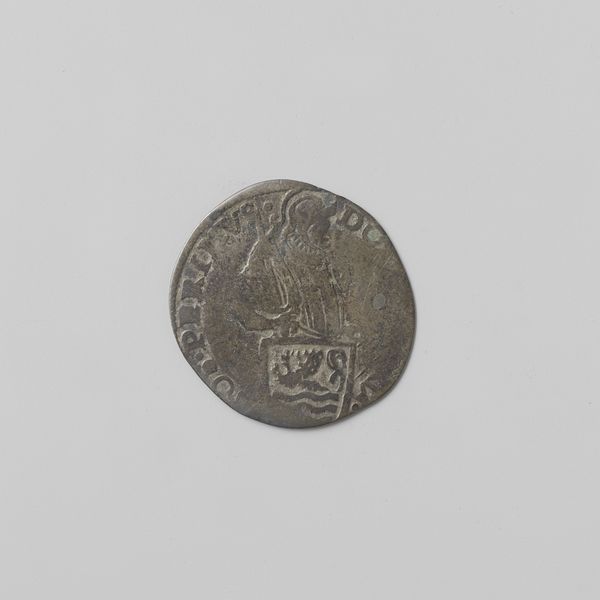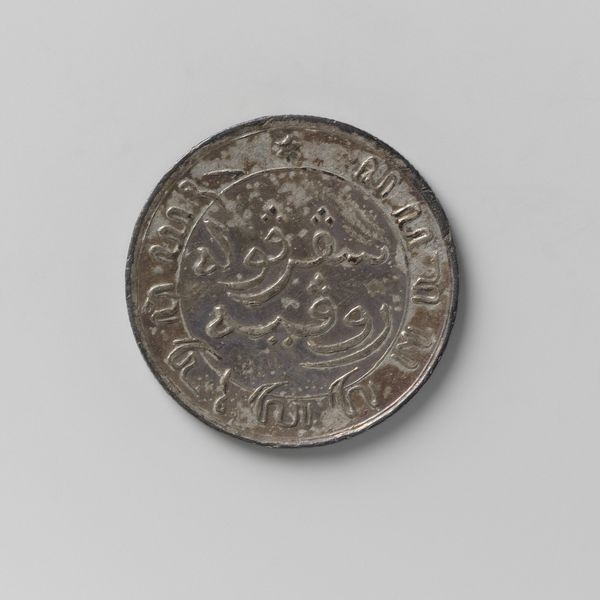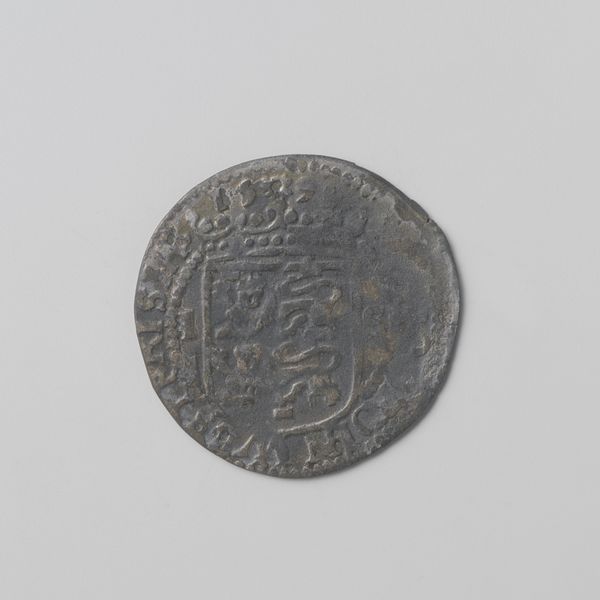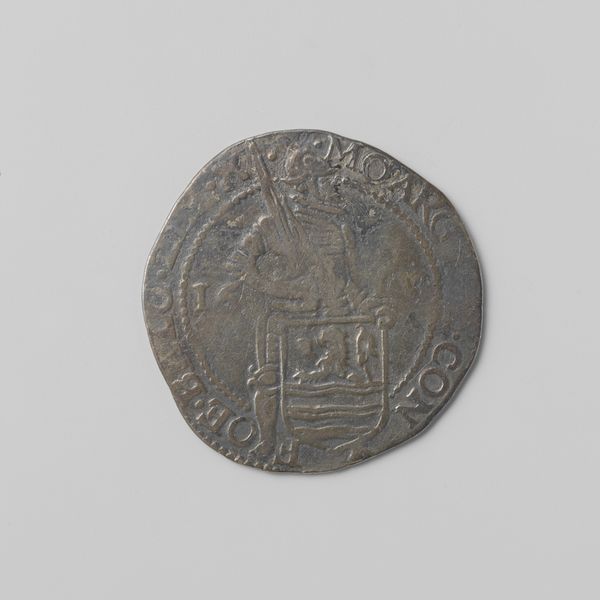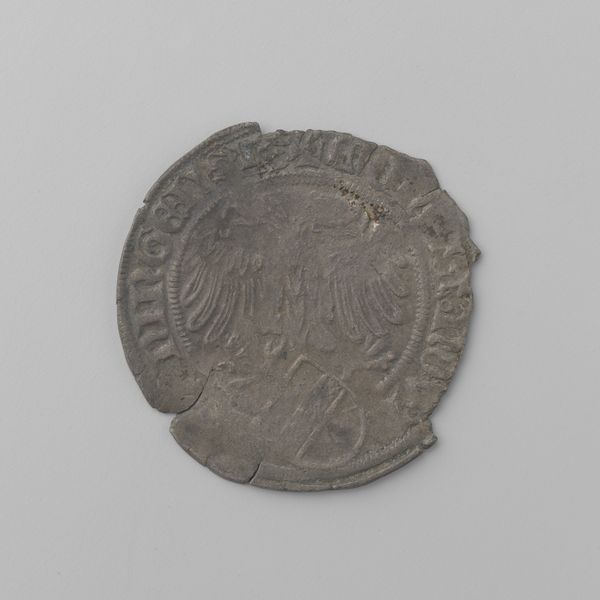
Utrechtse philippus van David van Bourgondië, 1455-1496 1455 - 1496
0:00
0:00
silver, metal, relief
#
portrait
#
medieval
#
silver
#
metal
#
relief
Dimensions: diameter 2.5 cm, weight 2.24 gr
Copyright: Rijks Museum: Open Domain
Curator: Let's examine this piece titled "Utrechtse philippus van David van Bourgondië," dating back to between 1455 and 1496, which portrays David of Burgundy, the Bishop of Utrecht. It is crafted from silver, a relief on metal. Editor: My immediate impression is that this object possesses the austerity characteristic of the late medieval period. The muted silver and rudimentary figures contribute to its humble mood. Curator: Yes, but look closely at the processes at play here. The way this object has been stamped or hammered shows the integration of the material world with societal representation. Do you agree with that? Editor: Without question. I'm drawn to how these visual symbols communicate the cultural and religious values. Observe how the religious emblems—the bishop's attire, the possible insignia—imply religious authority and position. They are designed to communicate not merely who David was but what he represented, in a way that persists across generations. Curator: That representation you highlight seems less about celebrating individualism, and more focused on projecting an office's material wealth. Its silvery gleam subtly indicates its economic and, implicitly, social power at the time of manufacture. The object would have signified not just devotional belief, but very tangible earthly status. Editor: And considering its relatively modest size, it must have been a highly personal item that prompted its user to ruminate about this leader or use for currency with cultural references embedded. In a psychological dimension, this type of object anchors identities and values in intimate spaces, giving its users means for engaging. Curator: True, though considering its purpose it does seem it could've facilitated consumption. To contextualize, consider how many skilled artisans were needed to mine the metal, mint the piece, and distribute it through mercantile systems. This object then signifies a culmination of socio-economic factors central to the time. Editor: I appreciate how you tied it back into tangible production conditions and the economics, whereas, to me, it remains an item where the visual and historical meanings reverberate even after the material usefulness may be over. Curator: It’s precisely through the physical artifact that we access these insights; thinking materially draws this work from one individual figure, and casts its legacy outwards again, tracing networks and values, no? Editor: A satisfying interweaving of how object as matter, also operates, nevertheless, in psychological and cultural fields.
Comments
No comments
Be the first to comment and join the conversation on the ultimate creative platform.
